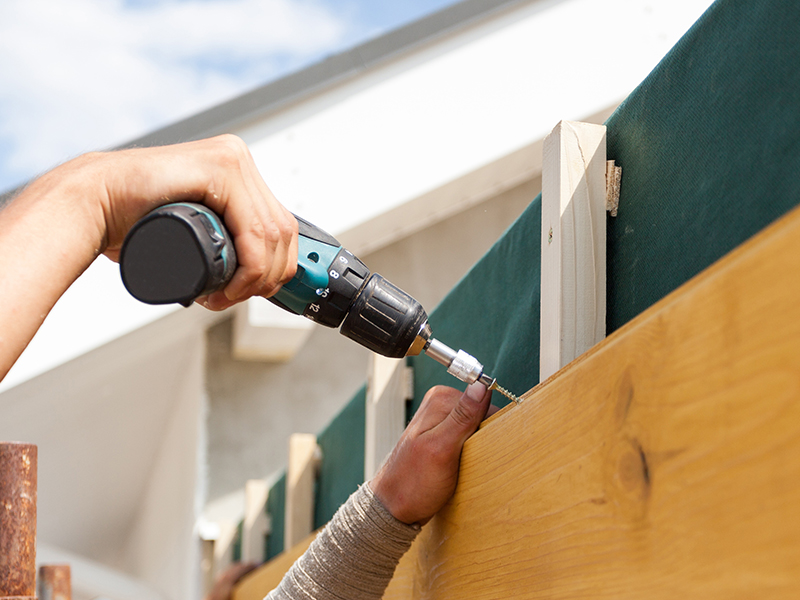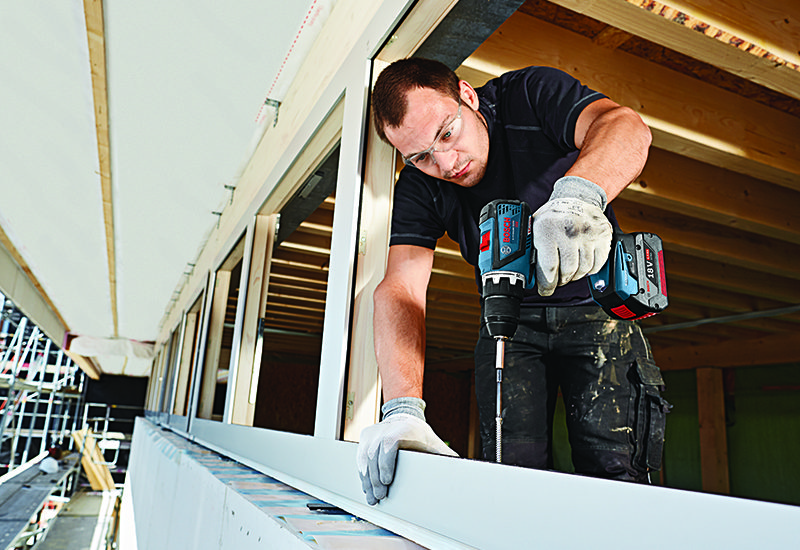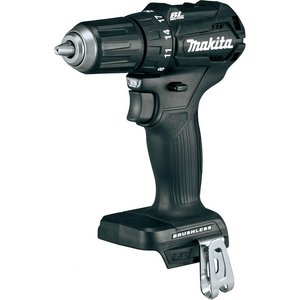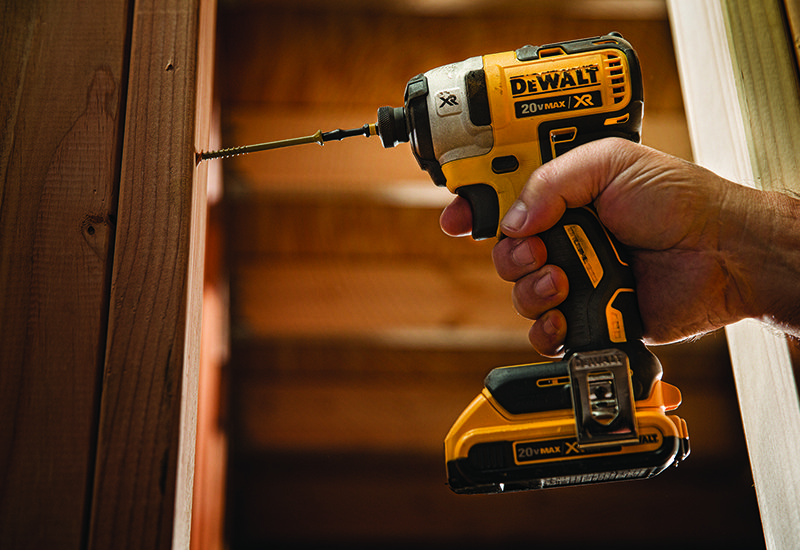Choose the type of drill/driver that best meets your needs, select the features you want, then settle on the right battery system.
 A cordless drill/driver might be the most-used tool by pros and DIYers alike. For jobs as diverse as hanging a picture frame to building a deck, and every task in between, it drives fasteners and drill holes an unmatched combination of power, finesse, and convenience. And though some models are designed to perform nearly every drilling and driving task you’ll ever encounter, others are made for specialized tasks, such as driving large lag screws or making holes in concrete. On today’s market you’ll find drill/drivers costing five times as much as others, as well as ones light and nimble enough for the most delicate of tasks, and ones so big and powerful you better eat your Wheaties before using them. To choose the one best for you follow these must-know tips:
A cordless drill/driver might be the most-used tool by pros and DIYers alike. For jobs as diverse as hanging a picture frame to building a deck, and every task in between, it drives fasteners and drill holes an unmatched combination of power, finesse, and convenience. And though some models are designed to perform nearly every drilling and driving task you’ll ever encounter, others are made for specialized tasks, such as driving large lag screws or making holes in concrete. On today’s market you’ll find drill/drivers costing five times as much as others, as well as ones light and nimble enough for the most delicate of tasks, and ones so big and powerful you better eat your Wheaties before using them. To choose the one best for you follow these must-know tips:
Must know #1: Select the right type
There are several major categories of drills/drivers and you’ll want to pick one from the category that best matches your typical work. You may even consider getting a drill/driver from more than one category if you’re a frequent user and undertake a lot of different tasks.

A cordless drill/driver is the “go to” tool for most users.
Cordless Drill/Driver
These are the most versatile, and not surprisingly, the most popular, tools in this category. They have a high speed for drilling and a lower speed and variable clutch for driving fasteners. Some have a hammer-drill mode – an essential feature for drilling holes in masonry materials.

A right-angle tool allows you to drive fasteners or drill holes in tight quarters.
Cordless Right-Angle Drill/Driver
This specialized tool operates much like a typical cordless drill/driver, but has right-angle gearing that powers the chuck at a 90° angle to the motor shaft. That bit of engineering shortens the distance from the tip of the chuck to the opposing surface of the motor housing to only about 4″, allowing you to work in tight areas, such as between floor joists. Small wonder the tool is much favored by electricians and plumbers.
Cordless Impact Driver

Impact drivers help you seat lag screws and other large fasteners.
Like the pneumatic impact wrench your mechanic uses to tighten and loosen wheel lug nuts, this tool makes the same, rapid “tap, tap, tap” sound caused by an internal mechanism repeatedly striking the tool’s rotating shaft. The rotational blows enable the tool to drive (and loosen) the largest and most stubborn of fasteners with great control. These tools are more efficient and faster in driving screws and are less likely to strip the screw. They are also are lighter and more compact than drill/drivers.
Cordless Screwdriver

Cordless screwdrivers are inexpensive and appropriate for driving small fasteners.
Lightweight and nimble, cordless screwdrivers are a one-trick pony used for driving smaller screws. You can use one for extended periods without fatigue, and their small size helps in accessing tight spaces. In a pinch you can use one to drill small holes using hexagonal-shank bits, but expect slow going.
A Note about cordless kits

Some kits provide every cordless tool you’ll likely need at significant savings.
Drill/drivers are often included in kits consisting of several different types of cordless tools, all sharing the same battery and charger. Consider buying a kit if you’re certain to use the other tools in the kit, because kits provide significant savings compared to buying the tools, batteries, and charger individually.
Must Know #2: Select a tool that’s comfortable to hold
Some tasks, such as attaching deck boards, require you to hold the drill for extended periods, so make sure it feels comfortable and balanced in your hand. If you have small hands or compromised wrist strength, don’t get the biggest, most-powerful drill/driver you can find. Buy a tool that’s big enough for your typically most-demanding job, and no bigger.
Must know #3: Get enough power
Power is measured by voltage. Higher battery voltage equates to more torque, or twisting strength. The range is from 6 volts to 36 volts. (Read more about batteries later on.) Usually, the higher the voltage, the heavier the drill. A 36-volt drill/driver can weigh nearly 8 pounds, so go that big only if you need to drive huge fasteners, drill big holes in a hurry, or have a need for saws requiring that much voltage and simply want to keep all your tools on the same voltage platform. For lighter work such as installing cabinet hardware or attaching drywall, a lower-voltage, lighter-weight drill will serve you just fine. For most users, a 12-volt tool provides ample power for common drilling and driving tasks, and an 18-volt tool will take on heavy-duty drilling/driving applications.
Must know #4: Select the right chuck size
The size of the chuck determines the maximum size of a bit shank the drill will hold. A ½” chuck is fairly standard now. This size gives you the flexibility of performing a range of tasks, from drilling small holes in wood up to drilling large holes in concrete or stirring heavy-bodied adhesives and drywall compound.
Must Know #5: Check out the speed
Most cordless drill/drivers have two speed ranges: low (about 300 to 400 rpm) with greater torque for driving screws, and high (about 1,200 to 1,500 rpm) for drilling. Better cordless tools have electronics that maintain speed under varying load.
Must Know #6: A clutch lets you fine-tune driving force
You can preset a drill/driver’s clutch at varying levels of resistance to driving force; when that level is reach the clutch will slip, make a rapid clicking sound, and not apply additional rotational force to the fastener. This keeps you from stripping a screw, snapping it, or overdriving it into the material. A clutch also protects the motor from overheating under excessive resistance.
Must Know #7: Batteries and chargers are key
The beating heart of any drill/driver is its battery. It determines the tool’s power and run-time.
Lithium-ion batteries have gained widespread use in cordless tools over the past few years because they are lighter and are better at holding a charge during periods of rest. That said, Ni-Cad batteries cost less and provide adequate performance, making them a viable alternative for the casual user. When comparing batteries, note that power is measured in volts and run-time is measured in amp hours.
Battery chargers also matter. You’ll find a huge range in recharge times between different chargers, from about 15 minutes to 3 hours. Generally, faster-charging chargers, and the batteries compatible with them, cost more. Some users, such as construction workers, who depend on fast recharge times, may want to consider getting a charger that yields fast charges. Also, consider having two batteries so you can have one in the charger ready for use when the battery in the tool runs out of juice.





2 Comments
Joshuas Shah
November 14, 2016 at 12:45 pmHelpful info.
I loved this Cordless Drill when I first got it, I had faced some problem that hearts me a lot.
You have written the awesome article. I think new buyer easily choose the right one if this article viewed.
Ashley Maxwell
December 14, 2017 at 7:01 pmThanks for your comment about how you should buy a drill that you will use a lot. I like how you said that there are many different types and sizes that you can get as well. My husband is looking into used drills and other machinery that he will find useful for all of his industrial projects.